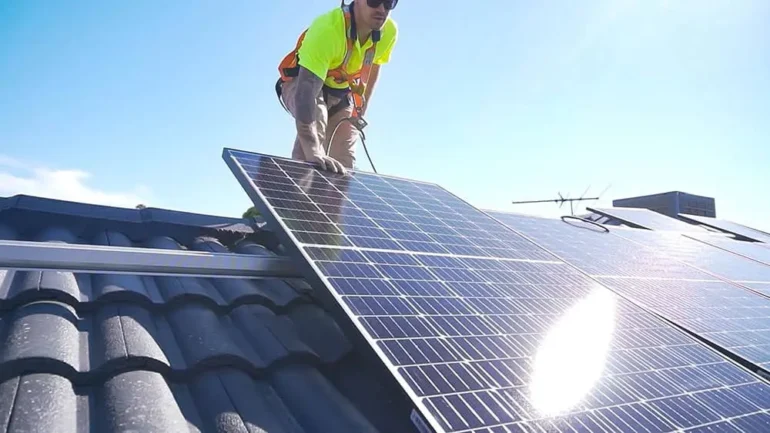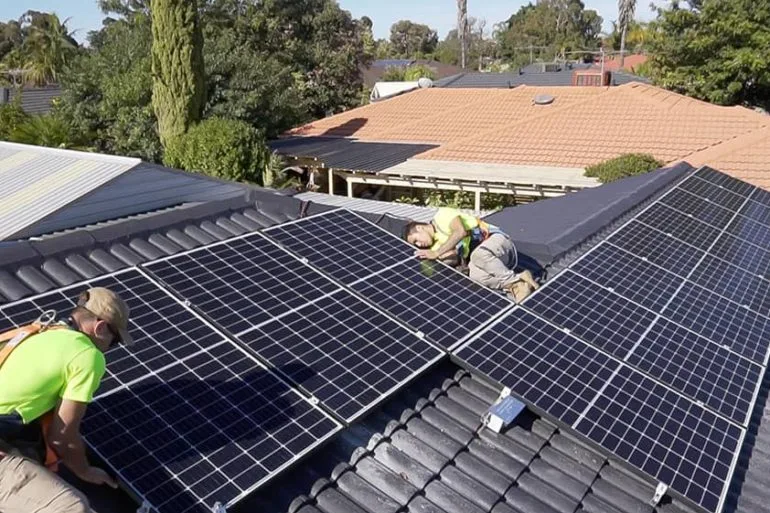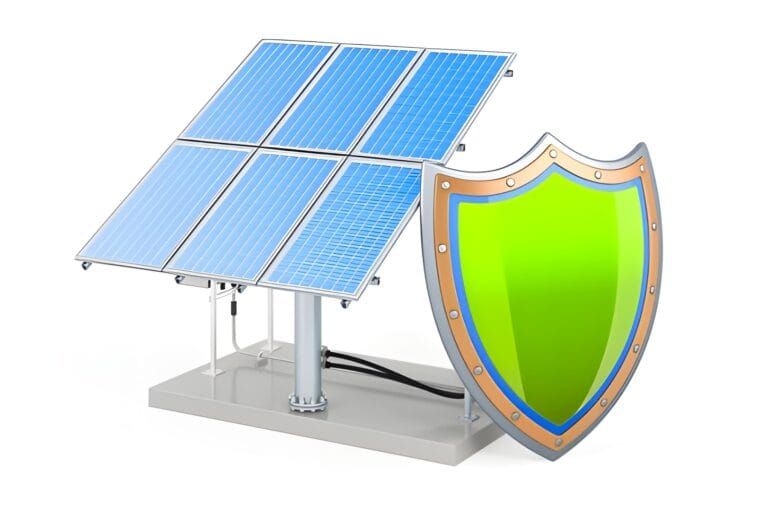Australia, known for its abundant sunshine, is at the forefront of the renewable energy revolution. With an unwavering commitment to clean energy, household solar power has become a vital solution for reducing carbon emissions and promoting sustainable development. In 2023, Australia enters a pivotal year in its solar energy journey, as the widespread adoption of household solar systems takes center stage. This article explores the reasons why 2023 is a critical year for household solar in Australia, highlighting the benefits, technological advancements, and government support driving this transformative shift.
Australia’s Solar Revolution
Australia boasts remarkable solar potential, thanks to its vast landmass and high levels of solar irradiation. In recent years, the country has witnessed a solar revolution, with homeowners increasingly embracing solar power as a cost-effective and environmentally friendly alternative to traditional energy sources. Rooftops across the nation are adorned with solar panels, and this trend continues to gain momentum.
Government Support and Incentives
The Australian government has played a significant role in fostering the growth of household solar by providing unwavering support and incentives. Recognizing the immense benefits of solar power, both at an individual and national level, the government has implemented various policies to encourage the adoption of solar systems. Generous feed-in tariffs, rebates, and grants have significantly reduced upfront costs, incentivizing homeowners to make the switch to solar power.
Falling Costs and Technological Advancements
The declining costs of solar panels and rapid technological advancements have made household solar increasingly accessible to Australian households. The prices of solar panels have decreased substantially, making them more affordable for the average homeowner. Simultaneously, advancements in solar technology have improved efficiency, durability, and aesthetics, making solar panels more appealing to residential consumers. Smart home technologies and energy storage solutions have further enhanced the attractiveness of household solar, allowing homeowners to maximize energy independence and reduce reliance on the grid.
Environmental Benefits of Household Solar
Transitioning to household solar allows Australians to significantly reduce their carbon footprint and contribute to a cleaner, more sustainable future. Solar power, as a renewable energy source, produces no greenhouse gas emissions during operation, unlike traditional fossil fuel-based electricity generation. By generating clean electricity from sunlight, homeowners can actively combat climate change, improve air quality, and safeguard the environment for future generations.
Economic Benefits and Energy Independence
Household solar provides substantial economic benefits to Australian homeowners. By generating their own electricity, households can significantly reduce their dependence on the grid, leading to substantial cost savings on energy bills. Excess energy can be fed back into the grid, allowing homeowners to earn credits through feed-in tariffs. Additionally, solar power offers a stable and predictable energy source, protecting households from rising electricity prices and ensuring long-term energy security.
The Role of Energy Retailers and Solar Providers
Energy retailers and solar providers play a pivotal role in the success of household solar in Australia. These entities facilitate the installation, maintenance, and monitoring of solar systems, ensuring a seamless transition to solar power for homeowners. Energy retailers offer competitive feed-in tariffs and tailored energy plans that incentivize households to invest in solar energy. Solar providers offer a range of options, assisting homeowners in choosing the most suitable solar systems and maximizing their solar energy generation.
Technological Innovations and Future Trends
The solar industry in Australia is not only benefiting from falling costs and improved efficiency but also witnessing remarkable technological innovations and future trends. The integration of solar energy storage systems, such as batteries, is gaining traction among homeowners. These storage systems enable the capture and storage of excess solar energy generated during the day for use during evenings or cloudy periods, enhancing energy self-sufficiency and reducing reliance on the grid. Furthermore, advancements in smart home technologies and energy management systems allow homeowners to optimize their energy consumption, monitor their solar generation, and remotely control energy usage. These innovations pave the way for a more intelligent and interconnected energy ecosystem, where homeowners have greater control over their energy consumption and can maximize the benefits of their solar systems.
Looking ahead, Australia is poised to continue its leadership in household solar adoption. The government’s commitment to renewable energy targets, ongoing technological advancements, and growing public awareness of climate change and environmental responsibility all contribute to the favorable environment for household solar. As the costs of solar panels continue to decline and technology improves, the benefits of household solar will become even more compelling for homeowners across Australia. Embracing solar power not only provides economic advantages but also empowers individuals to be part of the solution in combating climate change and building a sustainable future.

Job Creation and Economic Growth
The widespread adoption of household solar in Australia not only contributes to environmental sustainability but also generates significant economic benefits. The solar industry has become a major source of job creation, providing employment opportunities across various sectors, including manufacturing, installation, maintenance, and research and development. The growth of the solar industry has led to the emergence of new businesses and entrepreneurship, stimulating economic growth and diversification. Furthermore, the local manufacturing of solar panels and related components boosts the domestic economy and reduces dependence on imported goods. As the demand for household solar continues to rise, the solar industry’s contribution to employment and economic growth is expected to expand, providing a sustainable and thriving sector for years to come.
Community Engagement and Social Impact
The adoption of household solar systems goes beyond individual households, extending its impact to the broader community. Solar-powered households serve as a visible example of sustainable living, inspiring others to consider renewable energy options. Communities can come together to establish solar co-operatives or community solar projects, enabling those who may not have suitable rooftops for solar panels to benefit from solar energy. These initiatives foster community engagement, cooperation, and a sense of shared responsibility towards sustainability. Additionally, solar installations in schools, public buildings, and community centers can educate and raise awareness about renewable energy among community members, including children and young adults. The social impact of household solar extends beyond environmental benefits, creating a collective consciousness and promoting a more sustainable way of life.
Overcoming Challenges and Ensuring Quality
While household solar adoption in Australia is on the rise, there are challenges that need to be addressed to ensure the continued success and reliability of solar systems. One of the challenges is the variability of sunlight and its impact on energy generation. To mitigate this, energy storage technologies, such as batteries, are increasingly being integrated into household solar systems to store excess energy for use during low sunlight periods. Another challenge is the quality and reliability of solar installations. It is crucial for homeowners to work with reputable and certified solar providers who adhere to industry standards and best practices. Government regulations and quality assurance programs play a significant role in ensuring the reliability and safety of household solar systems. Regular inspections, maintenance, and performance monitoring are essential to maximize the longevity and efficiency of solar panels, ensuring homeowners receive optimal benefits from their investment.
Policy and Regulatory Frameworks
The success of household solar in Australia is closely tied to supportive policy and regulatory frameworks. Governments at the federal, state, and local levels play a crucial role in creating an enabling environment for solar adoption. Policy measures, such as feed-in tariffs, net metering, and renewable energy targets, incentivize homeowners and businesses to invest in solar energy. These policies not only reduce the financial barriers to solar adoption but also promote the growth of the solar industry and support the transition to a low-carbon economy. Governments can also facilitate streamlined processes for solar installation approvals and permits, ensuring a smooth and efficient transition for homeowners. Continuous evaluation and refinement of policies based on technological advancements and market dynamics are vital to foster long-term sustainability and maximize the benefits of household solar in Australia.
Solar Power and Energy Resilience
In an era of increasing concerns about energy security and resilience, household solar power plays a crucial role. By generating electricity on-site, homeowners become less reliant on the grid and are better prepared for power outages or disruptions. During extreme weather events or grid failures, solar-powered households can continue to operate, providing essential energy for lighting, appliances, and even critical medical equipment. This energy resilience empowers homeowners to have greater control over their energy supply and enhances their ability to weather unexpected challenges. As climate change continues to impact weather patterns and the stability of traditional energy infrastructure, household solar becomes a resilient solution that ensures uninterrupted power supply and peace of mind for homeowners.
Education and Awareness Campaigns
To accelerate the adoption of household solar in Australia, education and awareness campaigns play a vital role in disseminating information, debunking myths, and addressing misconceptions. Governments, solar industry organizations, and environmental groups can collaborate to raise awareness about the benefits of solar energy, the cost savings, and the environmental impact. Education initiatives can target homeowners, schools, and businesses, providing clear and concise information about the process of installing solar systems, the financial incentives available, and the long-term benefits. By empowering Australians with knowledge about solar energy, its advantages, and the steps involved in transitioning to solar power, these campaigns can inspire more households to embrace this renewable energy source and contribute to a sustainable future.
Solar-Powered Communities and Microgrids
The concept of solar-powered communities and microgrids is gaining momentum in Australia. Solar-powered communities involve clusters of houses or neighborhoods that collaborate to generate and share solar energy. By pooling resources and creating shared solar installations, communities can maximize energy generation, reduce costs, and foster a sense of collective responsibility towards sustainability. Microgrids, on the other hand, involve localized grids that integrate multiple energy sources, including solar power, battery storage, and even electric vehicles. These microgrids can operate independently or in connection with the main grid, providing increased energy resilience and flexibility. By adopting solar-powered communities and microgrids, Australians can build stronger, more interconnected communities while harnessing the benefits of solar energy on a larger scale.
Environmental Justice and Energy Equity
As the adoption of household solar systems grows, it is essential to address issues of environmental justice and energy equity. Low-income households and marginalized communities often face barriers to accessing the benefits of solar energy due to financial constraints, housing limitations, or lack of information. To ensure that solar energy is accessible to all Australians, governments and organizations can implement programs and initiatives that specifically target these communities. This can involve financial assistance, subsidies, and community-led projects that bring the benefits of solar power to underserved areas. Additionally, collaborations between the government, solar industry, and non-profit organizations can facilitate education and outreach programs that empower disadvantaged communities to embrace renewable energy and reap the financial and environmental advantages.
Conclusion
Australia’s commitment to household solar power continues to grow stronger, and 2023 represents a prime year for its widespread adoption across the country. With government support, falling costs, technological advancements, and environmental consciousness, Australian homeowners are increasingly turning to solar energy as a viable and sustainable alternative. By harnessing the abundant sunlight, households can reduce their carbon footprint, enjoy significant economic benefits, and achieve energy independence. The involvement of energy retailers and solar providers further facilitates a smooth transition to solar power, ensuring that homeowners have access to the necessary expertise and support. As technological innovations and future trends shape the solar industry, Australia remains at the forefront of the global renewable energy movement, driving positive change and paving the way for a greener and more sustainable future.







